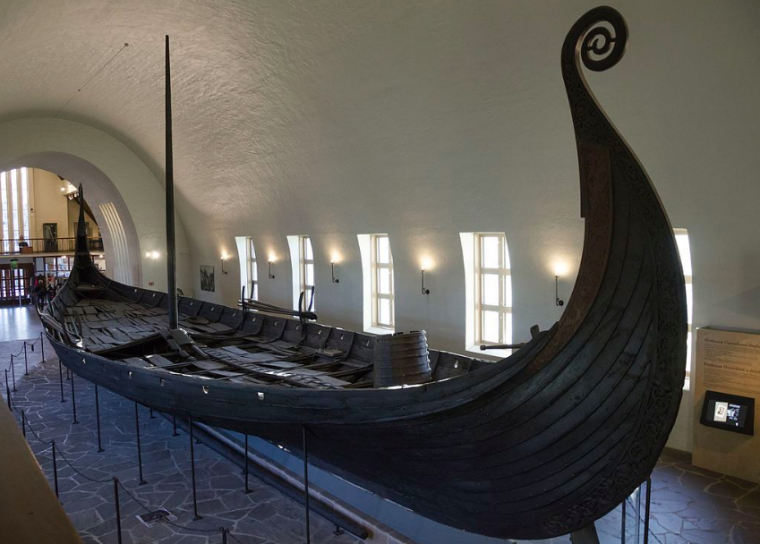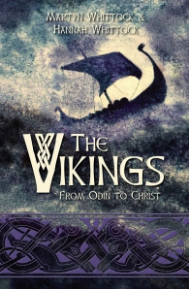Christian Vikings: The surprising faith of the feared sea raiders
Almost everyone has a clear picture of 'the Vikings': fierce pagan warriors, worshipping gods such as Odin and Thor, pillaging Christian monasteries and sacrificing victims in the dreadful rite of the 'Blood Eagle'. Their raids spread terror from Ireland to the rivers of Russia, from Frisia to North Africa. And in each place their paganism was their trade-mark.
Indeed, Scandinavia and Iceland were some of the last Western European communities to convert to Christianity. Iceland did not convert until the year 1000 and Norway and Sweden contained significant numbers of pagans for even longer. King Sigurd the Crusader, of Norway, even led a 'crusade' against the south-east of the Swedish kingdom, in the early 12th century in order to forcibly convert the locals from paganism to Christianity.

Today, if one enters 'Viking' as an internet images search the largest number of images are of warriors, with swords and axes. Some are half naked. A lot wear horned helmets, despite the total absence of such items from archaeological excavations. The occasional helmet is winged. There are quite a lot of dragon-prowed long ships. And the occasional woman appears dressed in 'Viking costume' and armed with axe, sword, helmet, shield; one assumes they are valkyries? There is the occasional logo for an American football team, a brand of beer or a computer game.
These are Vikings as many today like to imagine them. There is ruggedness, courage and battle; and it is fair to assume that all are probably pagan. None of the Vikings are in church. And one would not imagine that they ever would be – unless it was in the act of striking down a monk or lifting a silver reliquary as booty.
This is not just a product of modern image consultants. Christian contemporaries of the Viking raids in the British Isles, in the 8th and 9th centuries, often called them 'the pagans' or 'the heathens'. Islamic writers described the Viking raiders of Spain as 'al-Majus' (fire-worshippers, pagans) and commented 'may Allah curse them'. So, the matter seems settled: the Vikings were marauding pagans.
However, as our recently published book The Vikings: From Odin to Christ shows, things were a lot more complex than this. While the Scandinavian homelands were, indeed, some of the last places to convert to Christianity, this was not the case wherever Vikings settled. In these places they became Christians with remarkable speed. In England, the children of Vikings who had martyred King Edmund of East Anglia (remembered in the town of Bury St Edmunds) minted coins celebrating Saint Edmund. In Ireland, the death of Ivar, king of Dublin, was marked by an Irish chronicler with the words he 'rested with Christ, and Christian Scandinavians fought on both sides at the battle of Clontarf in 1014.
In the East, they rapidly converted to Orthodox Christianity and founded the first Russian state, based in Kiev. In Normandy, they became such enthusiastic supporters of the Catholic Church that the pope even awarded William the Conqueror a papal flag and a commission to sort out perceived irregularities in the Anglo-Saxon Church in 1066. Not how we like to remember the Battle of Hastings!
This has all been obscured by a combination of the original impact with its reinforcement by much later writers. In the 12th century, Irish writers celebrated the heroic Irish king Brian Boru's victory at Clontarf as being over a 'wrathful, foreign, purely pagan people'. Irish identity required the enemy to all be pagans. In 13th-century Iceland it was Christian writers who recorded the pagan activities of their ancestors in a period when the wild past could be safely recalled because it was no longer a threat. As a result of this, almost everything we know about Viking pagan beliefs was written by later Christians.

All of this played up the paganism and played down the Christianity. It is time to redress the balance. The 'Christian Vikings' should not be forgotten. While pagan marauders did, indeed, cause terrible destruction at first, they rapidly converted to the Christian faith. They found it attractive on many levels and this drove the abandonment of the old ways. The hammer of Thor was rapidly conquered by the cross of Christ wherever Vikings settled.
In 1030, the army of King Olaf Haraldson of Norway advanced with the battle cry of 'Onward, Christ's men, cross men, king's men all!' They and their faith deserve to be better remembered.
Martyn and Hannah Whittock are the authors of 'The Vikings: From Odin to Christ', published by Lion Hudson.











